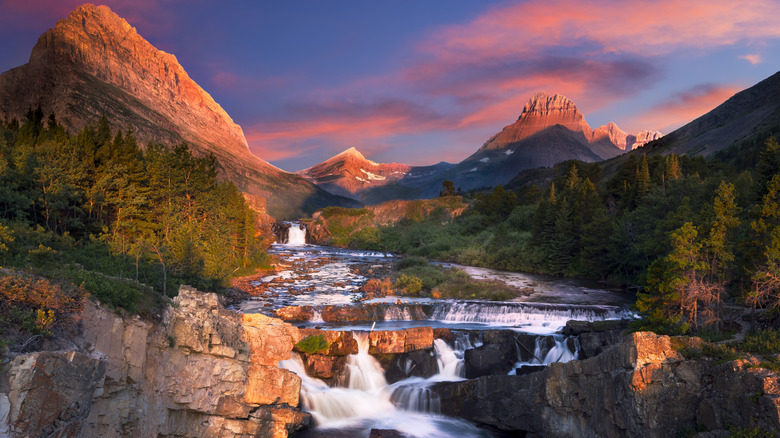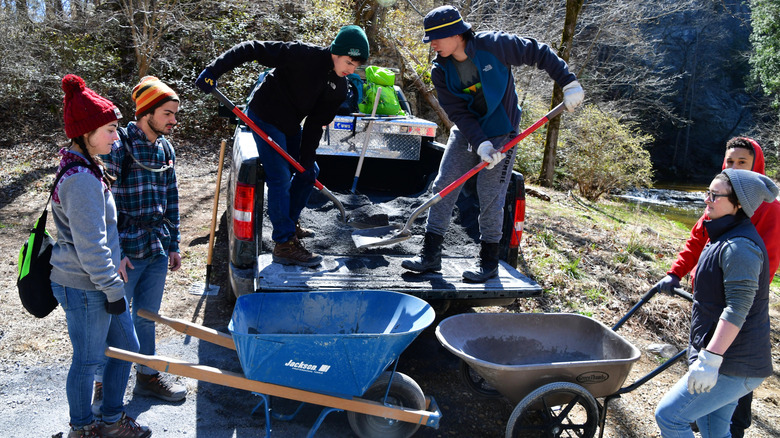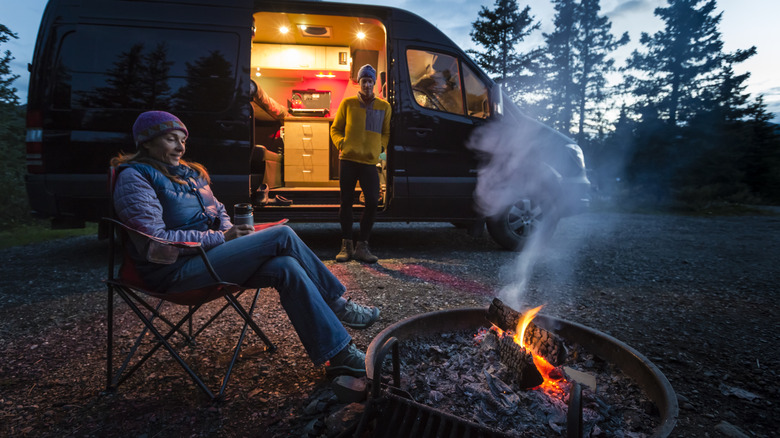Here's How To Volunteer At National Parks In 2025 And Earn Perks While Giving Back
From Hawaii and Alaska and scattered from coast to coast, when you take a look at the complete list of every national park in America, you'll find that it boasts a total of 63 parks, representing some of the most spectacular wilderness areas in the entire world. While professional rangers and other paid park personnel are integral to the functioning of these parks, volunteers provide critical services, too. Thousands of them, in fact. National Park Service spokesperson Kathy Kupper told Money, "More than 300,000 people volunteer their time and talent to national parks annually."
So, what do all these national park volunteers actually do? The list is as long as the trunk of a giant sequoia. It includes to-be-expected everyday tasks like trail maintenance and picking up garbage, but also more creative ones, like leading educational activities, conducting wildlife research, coordinating Junior Rangers, supporting libraries and museums, and even making art as an Artist-in-Residence. Every year, hundreds of volunteers (many of them retirees) also serve as campground hosts within the parks, where they greet visitors, inform them about rules, and provide valuable information. These campground hosts and other volunteers may not be paid, but they can realize a wide range of non-monetary and monetary perks. Like other voluntary activities, volunteering in national parks is intrinsically rewarding and has a surprising array of health benefits, especially for adults aged 60 and older, according to the Mayo Clinic. It keeps people physically and mentally active, reduces stress, and improves mood by increasing levels of the feel-good hormone, dopamine.
More perks of national park volunteering
Volunteering in a national park is probably a lot more scintillating than sitting at home and scrolling through your phone. It allows you to stay in a beloved national park, where you can learn about an area's unique flora and fauna as well as its cultural legacy, expanding your knowledge of the natural and human world. It also gives outdoor lovers a chance to meet others with similar values and possibly strike up a friendship with them. Since social connectedness has been found to be protective against both physical and mental ailments, this is yet another health benefit of volunteering. Volunteering might even save your life. According to a study published in 2020 in the American Journal of Preventive Medicine, people who volunteered at least 100 hours per year had significantly reduced mortality in a four-year follow-up period.
You definitely won't get rich volunteering, but you may be able to save money while visiting certain national parks. For example, voluntary campground hosts get a free extended stay wherever they are posted. Being able to park their RVs for free in a national park no doubt delights retirees and frugal campers. But aside from the obvious financial incentives, many return year after year to the same location simply because they come to love the experience of volunteering.
Applying and getting your Volunteer Pass
While many U.S. national parks are always free to enter, others charge per-vehicle or per-person entry fees ranging between $10 and $35. These can add up if you're visiting several national parks in the same general area, like Arches, Canyonlands, Bryce, and Zion, which are all in Utah (unless you happen to be visiting on a day when all U.S. national parks offer free entry). But volunteers who put in 250 hours of service earn what's called a Volunteer Pass, which provides free entry to any national park for a passholder plus anyone in their vehicle for parks charging a per-vehicle fee, or for a passholder plus four adults when parks charge a per-person fee. The Volunteer Pass is good for one year from the date of issuance.
To research volunteer positions at national parks, you can visit Volunteer.gov to research opportunities by location, time frame, activity, and a few other criteria. You can also visit the volunteer page of a particular national park's website, which you can locate either by searching on the Find a Park page on the NPS website or via Google. Most (but not all) parks have Volunteer or Get Involved pages to provide information about longer-term volunteer programs and positions as well as opportunities for short-term volunteers. The short-term volunteer positions are often for special events like clean-ups that center on a particular event, theme, or holiday, such as Earth Day or National Volunteer Week.


